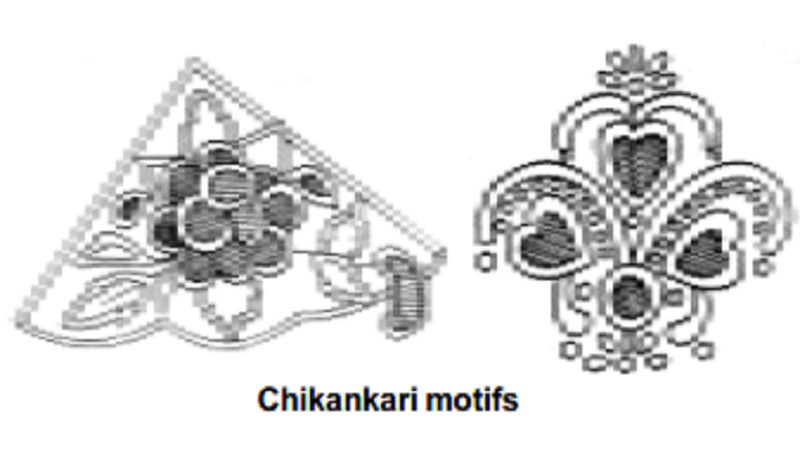Chapter: 11th 12th std standard Textiles And Dress Designing Cloth stitch Higher secondary school College practical steps methods Notes
Chikankari of Lucknow - Material, Motifs, Stitches, Uses of chikan work

Chikankari of Lucknow:
Chikan work is otherwise called as 'shadow work', white work or white embroidery.
The charm of this type of embroidery is very attractive and delicate style enhanced through the use of single color with simplicity miniature pattern and unbelievable eveness. This embroidery is basically down with white thread muslin background. Hence the name 'white embroidery'. On narrow strips of cloth, this embroidery gives fine and delicate lacy effect.
Material:
Chikankari though done on the white muslin background now is done on fine cotton material like voile, two x two, cambray, mulmul, organdie, chiffon, georgettes, nets and other similar sheer fabrics.
Motifs:
The motifs used are mostly flowers, foliages, creepers and birds.
Stitches:
Stitches like satin, back, stem, buttonhole and herringbone stitches are used.
a. Bukhia:
'Bukhia' is nothing but satin stitch, which is done on the wrong side of the material and the design is delicately outlined with tiny running stitches from the right side. This sort of embroidery gives an opaque effect. The effect of fine muslin background produces a shadow appearance.
b. Simplified Bukhia:
Herringbone is used in the place of sation. The stitches that appear on the back of the cloth is of herringbone style. It gives a shadow effect on the right side. This is easier and simpler than Bukhia.
c. Murri:
'Murri' is a knotted style of chikankari, worked in the centre of flowers, giving an embossed effect. It is nothing but French knot, which resemble the rice grain in shape.
d. Tepchi:
Tepchi is a simple running (darning) stitch, used to fill the straight or curved lines in the floral design. It is mainly used to give the outlines for the design. It is a flat style.
e. Button hole stitch:
This is used to cover small floral motifs. Closed blanket stitch is usually used for this.
f. Khatawa:
This is used in the place of Bukhia which is a minute applique work.
g. Jali Work:
'Jali work' gives an effect of open mesh or net like appearance. Sometimes it looks like drawn thread work or lace like. This effect is produced by pushing apart the warp and weft yarns with the help of needle, forming into tiny holes and are later tightened to give the cloth firmness and appearance of a net.
Uses of chikan work:
Chikan work was done on sari borders, pallu with tiny buttas in the body of the sari, blouses, kurtas, cuffs, collars, jubbas, handkerchiefs, caps, table mats, cushions, curtains and other household linen.
Related Topics